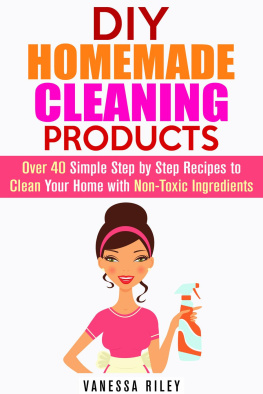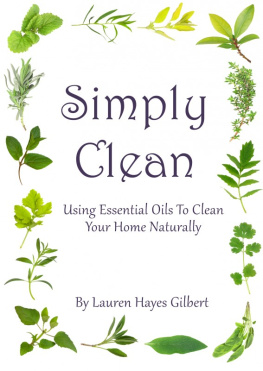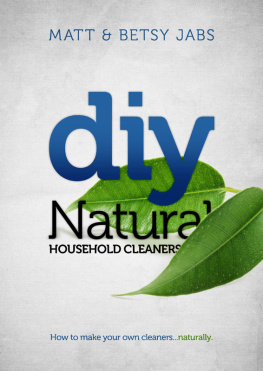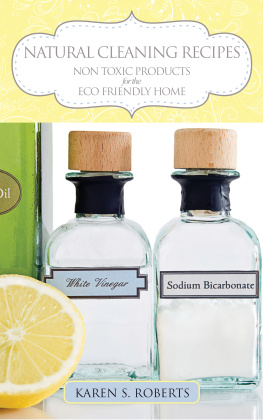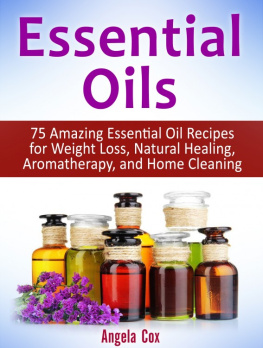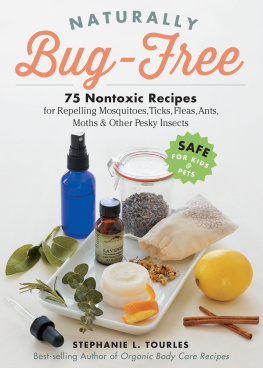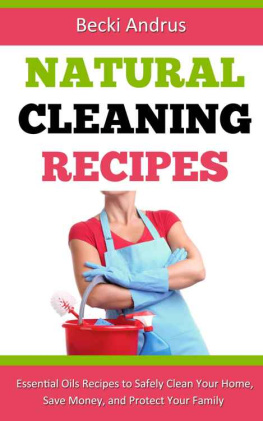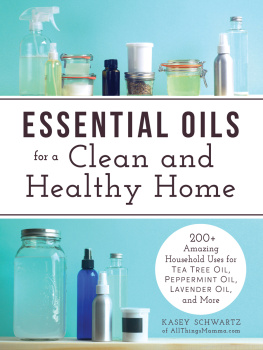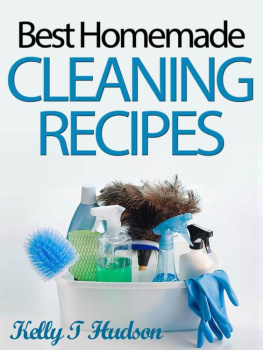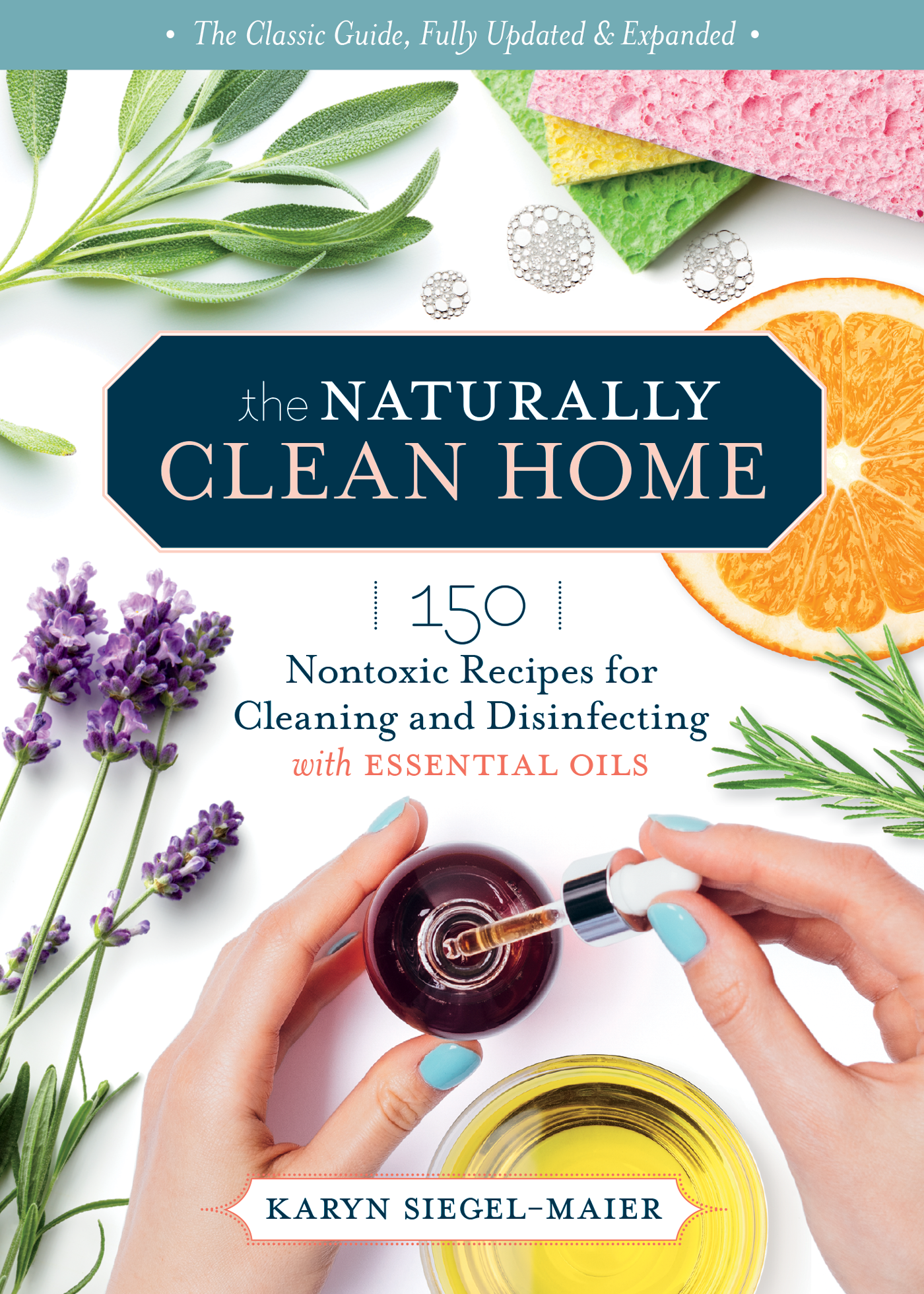The mission of Storey Publishing is to serve our customers by publishing practical information that encourages personal independence in harmony with the environment.
Edited by Hannah Fries
Art direction and book design by Alethea Morrison
Indexed by Samantha Miller
Cover photography by Bill Oxford/Getty Images (sponges); Floortje/iStock.com (lavender); iprogressman/iStock.com (hands with dropper and bottle); Jiri Hera/stock.adobe.com (sage); LoveTheWind/iStock.com (bubbles and jar of oil); Pranee Tiangkate/iStock.com (rosemary); vmenshov/stock.adobe.com (orange)
Illustrations by Kim Rosen
Text 1999, 2008, 2021 by Karyn Siegel-Maier
Ebook production by Slavica A. Walzl
Ebook version 1.0
March 30, 2021
All rights reserved. No part of this book may be reproduced without written permission from the publisher, except by a reviewer who may quote brief passages or reproduce illustrations in a review with appropriate credits; nor may any part of this book be reproduced, stored in a retrieval system, or transmitted in any form or by any means electronic, mechanical, photocopying, recording, or other without written permission from the publisher.
The information in this book is true and complete to the best of our knowledge. All recommendations are made without guarantee on the part of the author or Storey Publishing. The author and publisher disclaim any liability in connection with the use of this information.
Storey books are available at special discounts when purchased in bulk for premiums and sales promotions as well as for fund-raising or educational use. Special editions or book excerpts can also be created to specification. For details, please call 800-827-8673, or send an email to .
Storey Publishing
210 MASS MoCA Way
North Adams, MA 01247
storey.com
Library of Congress Cataloging-in-Publication Data on file
Contents
Dedication
This book is dedicated to you, the reader, whose commitment to better living is my inspiration and reward for writing it.
Acknowledgments
Warm thanks to my family, friends, and online community members for all the inspiration, feedback, and support over the years. Your encouragement is the driving force that motivates me every day.
Id also like to express my appreciation for the honor of being a member of Storeys family of authors. In particular, special thanks to Deborah Balmuth, Hannah Fries, and Paula Brisco for helping to give new life to these pages to reach a new generation of readers.
Chapter 1 The Science of Clean
Cleaning with some form of soap and water has been around nearly as long as dirt. Early humans quickly realized that wading into a lake, river, or stream was an effective way to cool off and loosen the mud from their feet. Archaeological evidence suggests that the ancient Babylonians were the first to bring water, animal fat, and ash together to make soap sometime around 2200 BCE.
Since then, our soap and cleaning agents have evolved a great deal, but our desire to ever improve them eventually made them toxic to us and the planet. The goal of this book is to help you reduce your exposure to potentially hazardous chemicals, make more environmentally sustainable choices, and harness the power of nature to clean more safely and effectively with pure, simple ingredients, including essential oils.
Coming Clean about Soap
Water alone cannot clean surfaces because it has a property called surface tension. In other words, it cant reach the surface where the crud resides because it just beads up and stubbornly refuses to spread out. The trick to getting water to behave as we want it to on countertops and fabrics is to introduce a surfactant to reduce water tension. This is where soap comes in.
Soap is a surfactant that makes water molecules more slippery and better able to get down to the business of lifting dirt and grease. The earliest liquid soaps were made from olive and palm oils and saponins, chemical compounds found in certain plants (for example, soapwort) that foam when mixed with water. For thousands of years, bar soap was made using animal fats until a supply shortage during World War I inspired German scientists to develop a synthetic surfactant, creating the first detergent. Since then, detergents have been improved with the addition of phosphate compounds and other chemicals. These chemicals are abundant in many types of household cleaners and even personal-care products like hand soap and shampoo. They have also found their way into the ecosystem, where they adversely impact marine life and inhibit the breakdown of other toxic substances in the environment.
These chemicals affect human health as well. For example, SDBS (sodium dodecylbenzene sulfonate) is a widely used surfactant that is absorbed through the skin and is known to be carcinogenic and damaging to the liver. The formulas in this book ask you to use castile soap, a vegetable-based soap made from olive, hemp, or coconut oil that is free of synthetic surfactants or detergents.
The Dangers of Bleach
Bleach, or sodium hypochlorite, is a combination of chlorine and sodium hydroxide (caustic soda) and is perhaps one of the most difficult of commercial cleaning products to relinquish. Technically speaking, household bleach is not considered corrosive or toxic, even if ingested. It is, however, classified as a skin and eye irritant. It can burn human tissue, internally or externally, especially in small children. In fact, the accidental swallowing of bleach is the most frequently received call at poison control centers involving children under the age of six. But young, tender hands and lips can also suffer serious burns.
If household bleach can do such damage, and is so predominantly a factor in the accidental poisoning of young children, why keep it around the house? There are many natural and nontoxic solutions for removing stains and keeping whites white. If you feel you must have access to a bottle of bleach, at least use one that is free of chlorine to reduce the risks. One of the best that I have used is made by Seventh Generation, whose products can often be found in health food stores and in some supermarkets. Treat this bleach as you would any other: Store it in a locked cabinet or out of reach of pets and children.
Getting Back to Natural
Its fair to say that natural cleaning isnt a new concept. If youre old enough to reminisce about Woodstock, then youre aware that the movement to stem the flow of toxins in our lives and in our environment has shifted from the outer fringe to the mainstream. By the mid-1990s, green products had hit the market in a big way. Unfortunately, a lack of regulation has led to greenwashing, meaning that some companies are using misleading language to describe their products as all-natural when they actually are not.
No regulatory definitions exist for words like all-natural and nontoxic, making them meaningless on a product label unless a certification seal of a recognized, independent third party, such as the Environmental Protection Agency (EPA), backs up such claims. So, until these manufacturers clean up their act (and, to be fair, many are finally responding to consumer demand for safer products), we all need to be expert label readers and ingredient detectives. The ultimate solution? Make it yourself, and keep more green in your wallet!



